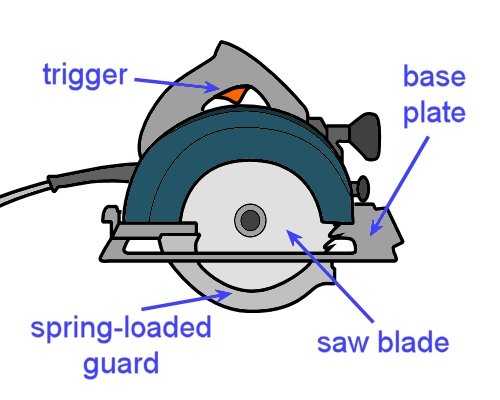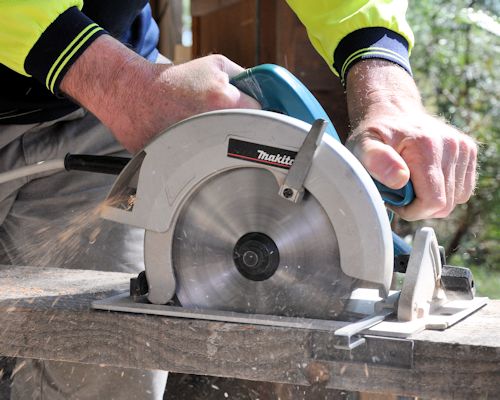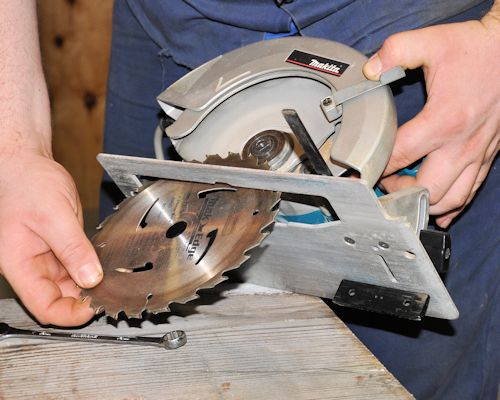Circular saw operation
 Audio for slide 1 (mp3 |6|KB)
Audio for slide 1 (mp3 |6|KB)
They are used to cross-cut timber, rip timber lengthwise and cut wood-based panel products.
Note that they are only designed to cut in a straight line - if you need to cut a profiled shape, such as around a doorjamb or architrave, you should use a jigsaw.

 Audio for slide 4 (mp3 |6|KB)
Audio for slide 4 (mp3 |6|KB)
Unlike an electric planer, you don't need to wait until the saw has stopped turning before you put it down, because the spring-loaded guard will flick back into place when you remove the saw from the work.
But this means you have an additional safety check to carry out - always make sure the guard is moving freely and springing back to its correct position before connecting the saw to the power supply.
Click on the link below to see a basic SOP for a circular saw.


Learning activity
Audio 5 (mp3 |6|KB)The first dot point in the SOP talks about the importance of securing the material you're about to cut, and making sure any large offcuts will be well-supported before you start cutting.
How would you go about securing the following two pieces of work?
You can use a drawing for each one to illustrate your answer if you wish.
- A long length of solid timber skirting board (say 4.8 m long), to be cut in the middle.
- A 2400 x 1200 sheet of plywood, to be cut back to 1800 x 1200.







